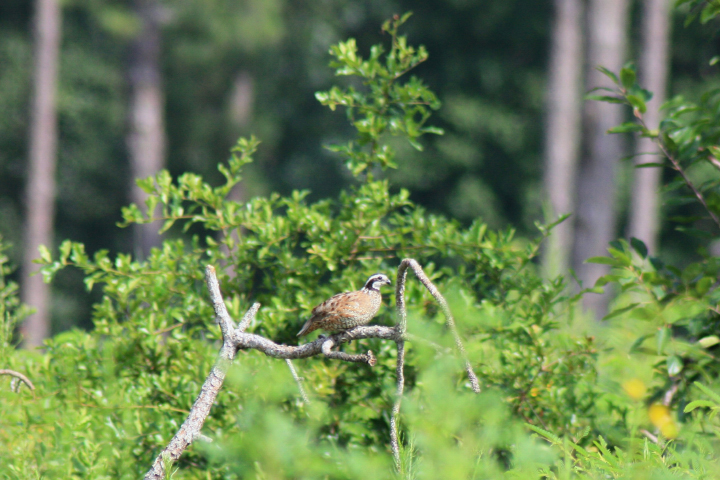

The northern bobwhite (Colinus virginianus) quail is known as a fire bird. With a round body, dappled feathers, and distinct whistle, the charismatic quail thrives in the frequently burned pine wood savannas and open forests of the U.S. Southeast. In March 2023, burning in the region was under way.
In the Southeast, fire has long been used as a tool to manage pine forests and forest undergrowth. Prescribed (or controlled) burns are conducted in spring to improve natural plant and animal communities. The fires also prevent the accumulation of pine needles and underbrush which may feed more uncontrolled wildland fires.
On March 14, 2023, the Moderate Resolution Imaging Spectroradiometer (MODIS) on NASA’s Aqua satellite acquired this image of smoke streaming from several fires in Alabama, Georgia, and northern Florida. Red dots indicate the locations of active fire detections observed by the Visible Infrared Imaging Radiometer Suite (VIIRS) on the NASA-NOAA Suomi NPP satellite. Some of the fires were likely prescribed burns planned and implemented by state and national forest management agencies.
“Most landscapes in North America are fire-adapted,” said Jessica McCarty, the associate program manager of NASA’s Applied Sciences Wildland Fire program and branch chief of biospheric sciences at NASA’s Ames Research Center. “These prescribed burns benefit a lot of different species, from trees to birds and reptiles.”
McCarty’s research using MODIS data has found that cropland and prescribed fires were responsible for 77 percent of the total active fire detections within the U.S. and were most abundant in the South and Southeast.
An example of a fire-dependent species is the Table Mountain pine (Pinus pungens), native to the Appalachian Mountains. Table Mountain pine have serotinous cones, which are glued shut with a strong resin. Only when fire sweeps through the forest does the resin melt, opening the cone and releasing seeds to the environment for reproduction. Other pines, such as the longleaf pine, need an open canopy and bare ground for saplings to survive, making them dependent on frequent fires.
In the MODIS image, smoke can be seen coming from the Talladega National Forest in the southern foothills of the Appalachian Mountains. According to the U.S. Forest Service, a prescribed burn of 1,200 acres in the Oakmulgee District of the forest was planned for March 14. The Oakmulgee District of the Talladega is home to Alabama’s largest contiguous longleaf pine forest. Another plume of smoke can be seen coming from Conecuh National Forest, near Alabama’s southern border. The Forest Service planned a prescribed burn on March 14 of 3,299 acres within the forest.

Fires in southeastern pines limit the density of the trees in the forest, allowing for growth of grass and flowering plant (forb) species well-suited for bobwhite quail nesting and cover. “Prescribed burns typically occur in Georgia during the transition from the dormant season to the growing season, in March and April, to stimulate lush vegetation for brood-rearing bobwhites,” said David Weber, a research assistant at the University of Georgia and the Tall Timbers research station. Weber has been studying the effects of prescribed fire on the bobwhite quail and recently found that frequent burning (typically every one to two years) promoted healthy quail populations.
NASA Earth Observatory image by Lauren Dauphin, using MODIS data from NASA EOSDIS LANCE and GIBS/Worldview and VIIRS data from NASA EOSDIS LANCE, GIBS/Worldview, and the Suomi National Polar-orbiting Partnership. Bobwhite quail photo by Jessica Mohlman, University of Georgia Gamebird and Managed Ecosystems Lab. Story by Emily Cassidy.